I get patients all the time that are skeptical about the treatment options that myself and other doctors recommend. As a for instance, MLS laser therapy is one of the best treatment options I have for peripheral neuropathies, achilles tendonitis and wound healing. I believe the reason they are skeptical is because they don't know anything about the research of these treatments. So I am writing today to answer the big and all-important question:
Is there a scientific evidence on MLS laser therapy? Is there proof that MLS laser therapy works?
Yes, there is scientific evidence that supports the effects of MLS Laser Therapy in accelerating cellular activity, reducing inflammation, increasing blood flow, and promoting tissue repair. Here’s how the science behind it works:
1. Cellular Activity and Tissue Repair
MLS Laser Therapy uses two synchronized wavelengths of light (808 nm and 905 nm) that penetrate tissues at different depths. These wavelengths stimulate mitochondria, the “powerhouses” of cells, to produce more adenosine triphosphate (ATP), which is the energy currency for cells. The increase in ATP production energizes cells, promoting faster repair, regeneration, and growth of damaged tissues. This process, known as photobiomodulation, triggers cellular processes that enhance healing, reduce scar tissue formation, and promote tissue regeneration. Here is a little note about photobiomodulation, just so you know that I am not making things up.
Photobiomodulation
Photobiomodulation (PBM) refers to the use of light therapy to promote healing, reduce inflammation, and alleviate pain. It involves the application of lasers or to stimulate cellular activity.
How It Works
PBM operates on the principle that specific wavelengths of light can affect biological processes in cells. When these light waves are absorbed, they can enhance the production of ATP, leading to improved cell function and tissue repair.
Applications
Photobiomodulation is used in various medical and therapeutic settings, including:
-
-
-
-
- Pain management
- Wound healing
- Reducing inflammation
- Improving skin conditions
-
-
-
Benefits
Some of the benefits of photobiomodulation include:
-
-
-
-
- Non-invasive treatment option
- Minimal side effects
- Can be used alongside other treatments
-
-
-
Scientific Basis of Cellular Activity and Tissue Repair:
Studies show that light wavelengths in the near-infrared range (used in MLS lasers) can increase ATP production in cells, leading to faster tissue repair and regeneration .
2. Reduction of Inflammation
MLS Laser Therapy reduces inflammation by modulating the activity of pro-inflammatory mediators. The laser light stimulates the release of cytokines and growth factors, which help regulate inflammation. It also reduces the levels of inflammatory markers such as prostaglandins and cytokines, thereby decreasing swelling and pain.
Scientific Basis on the Reduction of Inflammation:
Studies indicate that laser therapy can modulate immune response by reducing pro-inflammatory markers and increasing anti-inflammatory cytokines, helping to resolve inflammation more quickly .
3. Increased Blood Flow and Oxygenation
The light from MLS lasers improves blood circulation by causing vasodilation—the widening of blood vessels. This increase in blood flow delivers more oxygen and nutrients to the damaged tissues, promoting faster healing and clearing out cellular waste products like lactic acid and carbon dioxide. Improved blood flow is crucial for tissue repair and the reduction of swelling and inflammation.
Scientific Basis Increased Blood Flow and Oxygenation:
Research has demonstrated that laser therapy improves microcirculation and promotes vasodilation, which helps deliver more oxygen and nutrients to the affected area .
4. Pain Relief
MLS Laser Therapy provides pain relief by blocking pain signals transmitted by nociceptors (pain receptors) in the nervous system. Additionally, the therapy increases the production of natural pain relievers such as endorphins and enkephalins. The anti-inflammatory effects also reduce pressure on surrounding nerves, further alleviating pain.
Scientific Basis for Pain Relief:
Studies show that laser therapy reduces pain by inhibiting pain receptor signals and increasing the release of endorphins .
Summary of Science
In summary, MLS Laser Therapy relies on photobiomodulation, where light energy at specific wavelengths interacts with tissues on a cellular level, enhancing energy production, reducing inflammation, increasing circulation, and ultimately promoting faster healing. There are numerous studies demonstrating the beneficial effects of laser therapy in musculoskeletal and nerve conditions, which confirm its safety and efficacy.
Have a look at these research articles on MLS laser therapy and photobiomodulation?
https://www.frontiersin.org/journals/oncology/articles/10.3389/fonc.2020.01255/full
https://bmjopen.bmj.com/content/12/9/e059479
https://bmjopen.bmj.com/content/12/9/e059479
https://www.frontiersin.org/journals/oncology/articles/10.3389/fonc.2020.01255/full
https://bmjopen.bmj.com/content/12/9/e059479
https://www.frontiersin.org/journals/oncology/articles/10.3389/fonc.2020.01255/full

